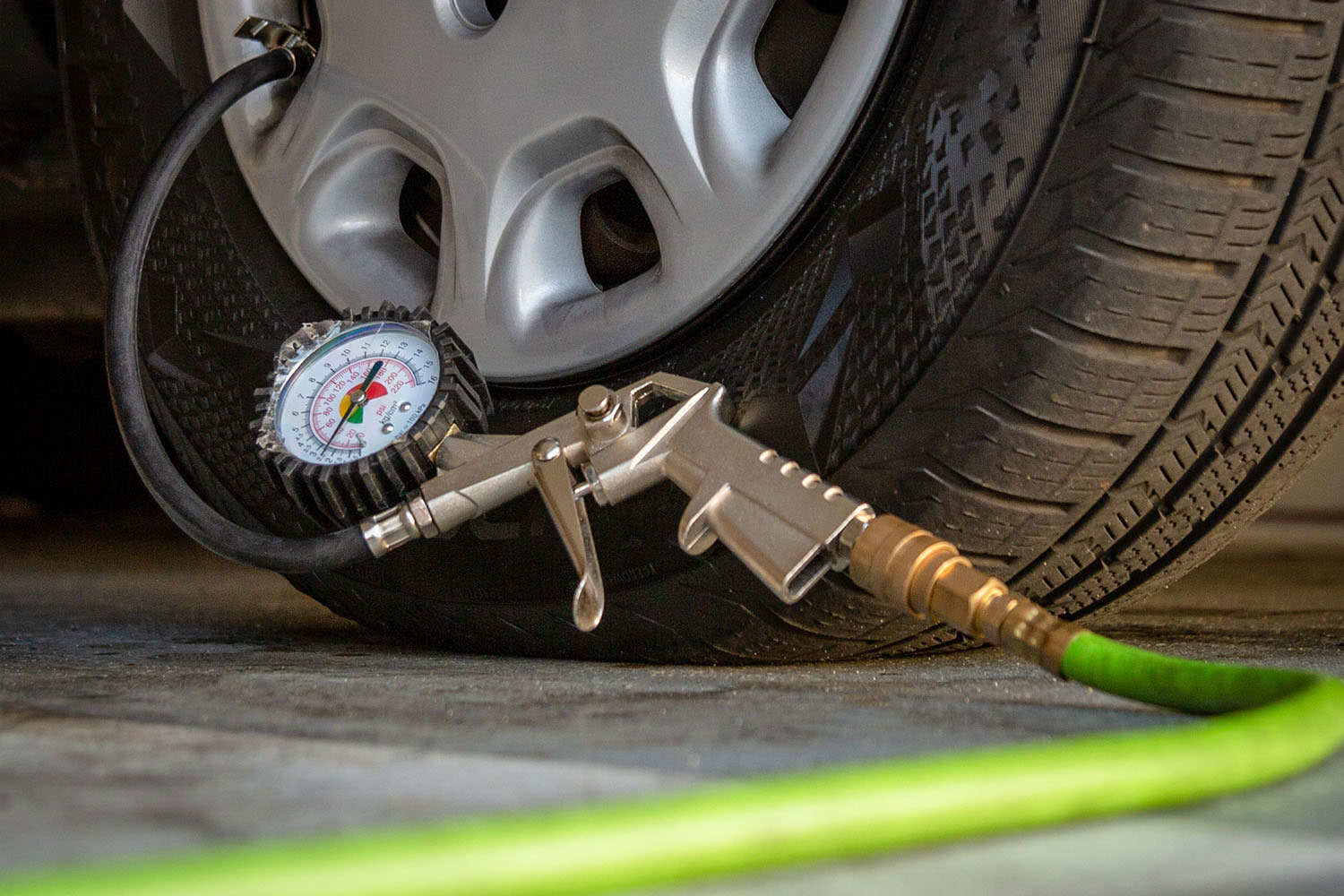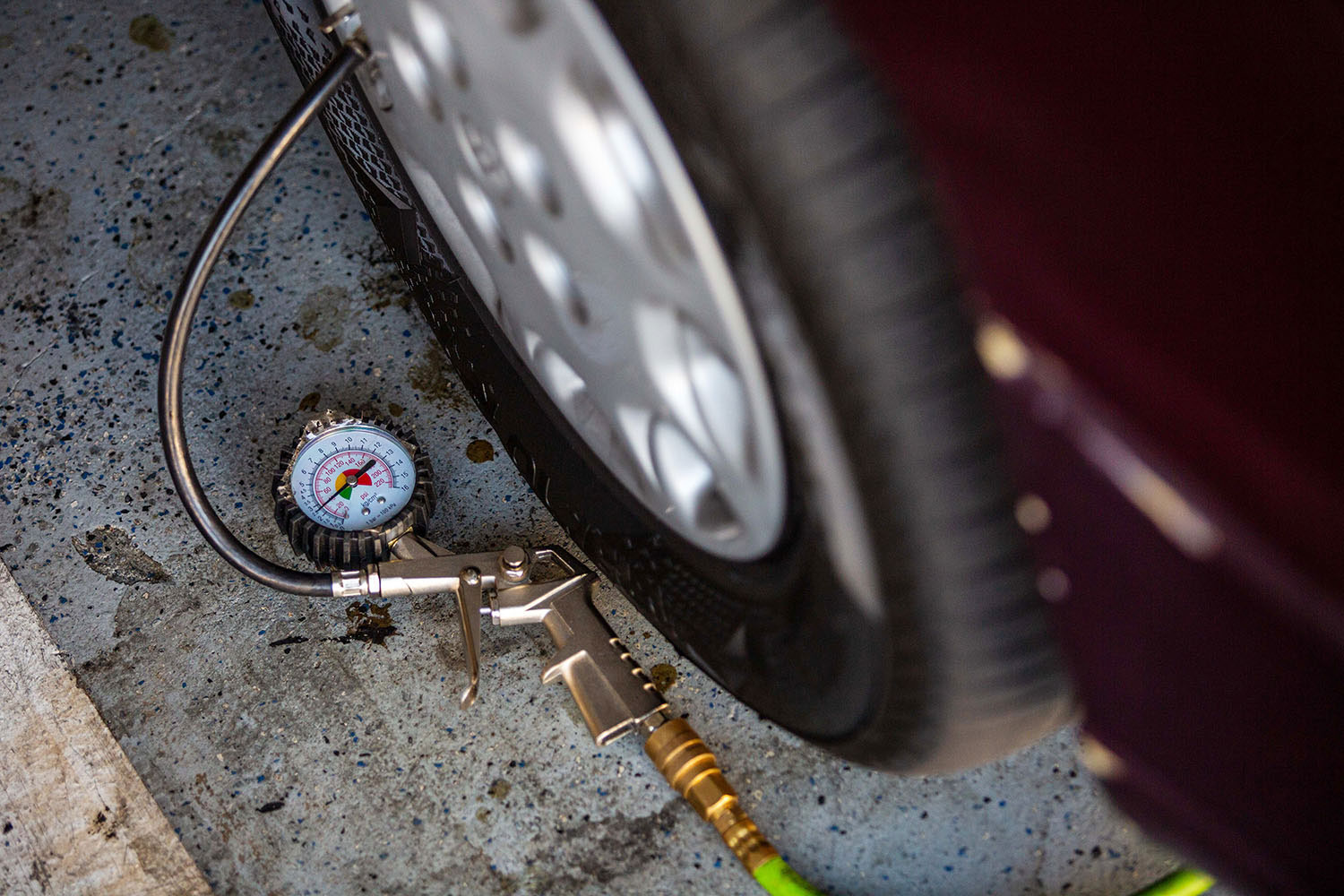How to Use a Tire Inflator Kit
With many newer cars no longer carrying a spare tire, this space-saving tool can get you home after a puncture.
 Manuel Carrillo III/Capital One
Manuel Carrillo III/Capital One
Not every vehicle comes with a spare tire, typically as a way to save on weight, improve fuel mileage, and free up more space in the trunk or cargo area. Instead, some automakers offer a tire inflator kit that can seal certain types of punctures and pump air pressure back up to a safe operating level to get you back home or to a repair shop.
Tire inflation kits come in various designs, but they all operate using the same basic steps. Here's a look at how these kits work and how to use them.
How Does a Tire Inflator Kit Work?
There are two main components to a tire inflator kit:
- The first is a bottle of sealant compound, a liquid chemical substance that plugs up small punctures and forms a bond with the rubber after coating the inside of the tire
- The second is an air compressor that pumps the sealant and air into the tire, filling it up to factory pressure so that the tire can be driven on
An important caveat when using this type of kit is that it can only be used to seal small punctures (roughly 4 millimeters, or just over 1/8 of an inch) located on the tire's tread. If the hole is any larger or is located on the sidewall, then an inflator kit will not work.
 Manuel Carrillo III
Manuel Carrillo III
How to Use a Tire Inflator Kit
Before doing any work on your vehicle, make sure it is safe to do so. A tire inflator kit is safe to use in a parking lot or on a quiet side street, but on the side of the highway or on a busy road, it's better to call for professional assistance.
The first step is to follow the kit's instructions to attach the can of sealant to the inflator. Then, connect the inflator to the tire valve. Once attached, plug in the inflator to your vehicle's 12-volt power outlet. Turn the unit on and inflate the tire for the time described by the instructions (which will vary from one vehicle to the next). Then turn the unit off and detach the inflator. You might see some sealant pushed out through the tire's bead along the wheel, which is normal.
Using a tire pressure gauge (which may be built into the kit), check that the pressure in the repaired tire is at the level recommended by your vehicle's owner's manual. You can also use your vehicle's tire pressure monitoring system to verify a safe level of inflation. Some kits require that you drive at a modest speed for a few miles after using the kit as a final step to ensure that the sealant spreads throughout the inside of the tire.
You'll Have to Head to the Tire Repair Shop Eventually
Unlike a full-size spare, a tire sealing system isn't intended to be a long-term solution. Most manufacturers recommend driving no more than 100 miles on a repaired tire before replacing it. Similar to a donut-sized spare, it's also important to not exceed 50 mph on a sealed tire.
Written by humans.
Edited by humans.
 Benjamin Hunting
Benjamin HuntingBenjamin Hunting is a writer and podcast host who contributes to a number of newspapers, automotive magazines, and online publications. More than a decade into his career, he enjoys keeping the shiny side up during track days and always has one too many classic vehicle projects partially disassembled in his garage at any given time. Remember, if it's not leaking, it's probably empty.
Related articles
View more related articles